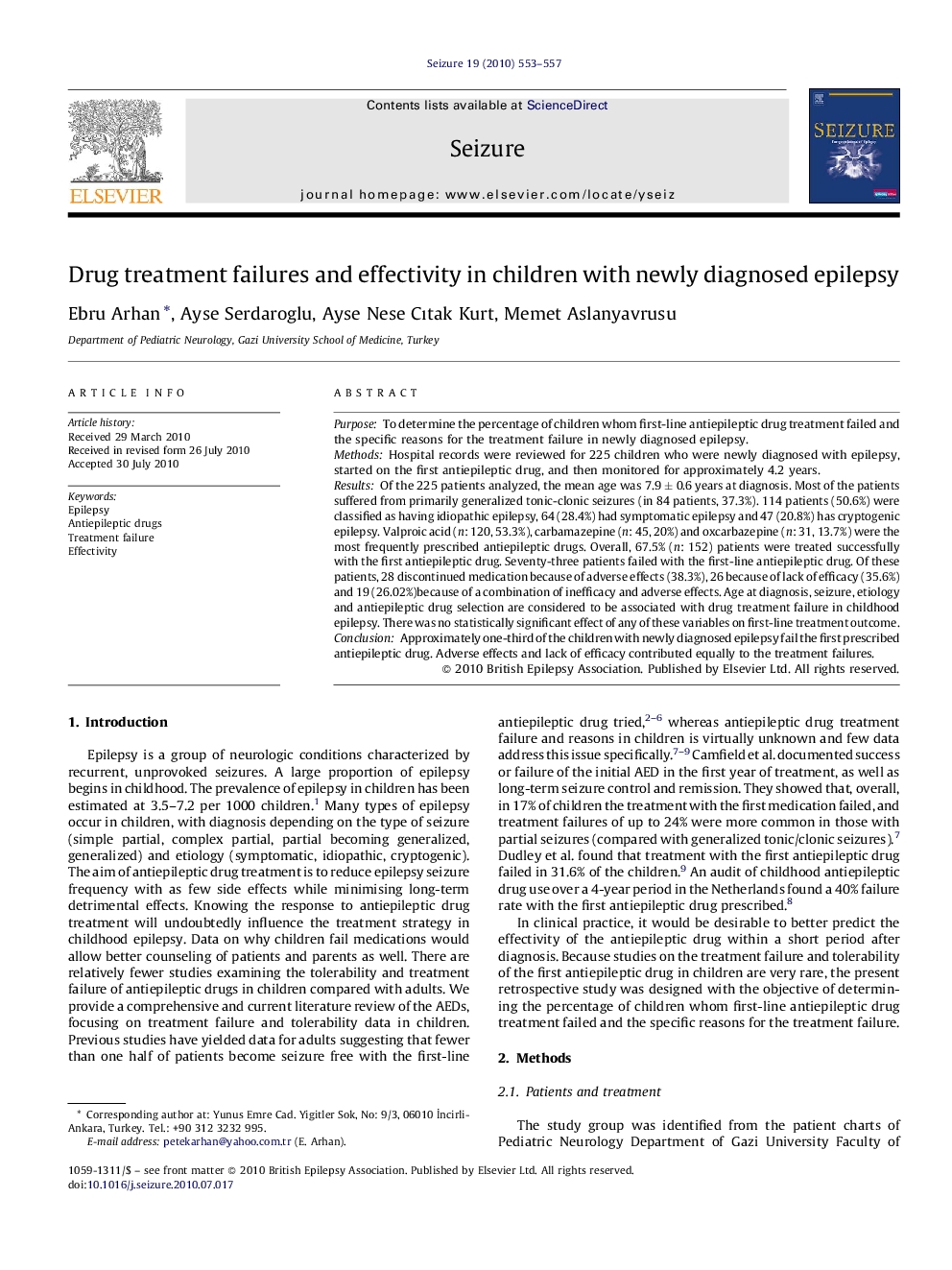| Article ID | Journal | Published Year | Pages | File Type |
|---|---|---|---|---|
| 340688 | Seizure | 2010 | 5 Pages |
PurposeTo determine the percentage of children whom first-line antiepileptic drug treatment failed and the specific reasons for the treatment failure in newly diagnosed epilepsy.MethodsHospital records were reviewed for 225 children who were newly diagnosed with epilepsy, started on the first antiepileptic drug, and then monitored for approximately 4.2 years.ResultsOf the 225 patients analyzed, the mean age was 7.9 ± 0.6 years at diagnosis. Most of the patients suffered from primarily generalized tonic-clonic seizures (in 84 patients, 37.3%). 114 patients (50.6%) were classified as having idiopathic epilepsy, 64 (28.4%) had symptomatic epilepsy and 47 (20.8%) has cryptogenic epilepsy. Valproic acid (n: 120, 53.3%), carbamazepine (n: 45, 20%) and oxcarbazepine (n: 31, 13.7%) were the most frequently prescribed antiepileptic drugs. Overall, 67.5% (n: 152) patients were treated successfully with the first antiepileptic drug. Seventy-three patients failed with the first-line antiepileptic drug. Of these patients, 28 discontinued medication because of adverse effects (38.3%), 26 because of lack of efficacy (35.6%) and 19 (26.02%)because of a combination of inefficacy and adverse effects. Age at diagnosis, seizure, etiology and antiepileptic drug selection are considered to be associated with drug treatment failure in childhood epilepsy. There was no statistically significant effect of any of these variables on first-line treatment outcome.ConclusionApproximately one-third of the children with newly diagnosed epilepsy fail the first prescribed antiepileptic drug. Adverse effects and lack of efficacy contributed equally to the treatment failures.
